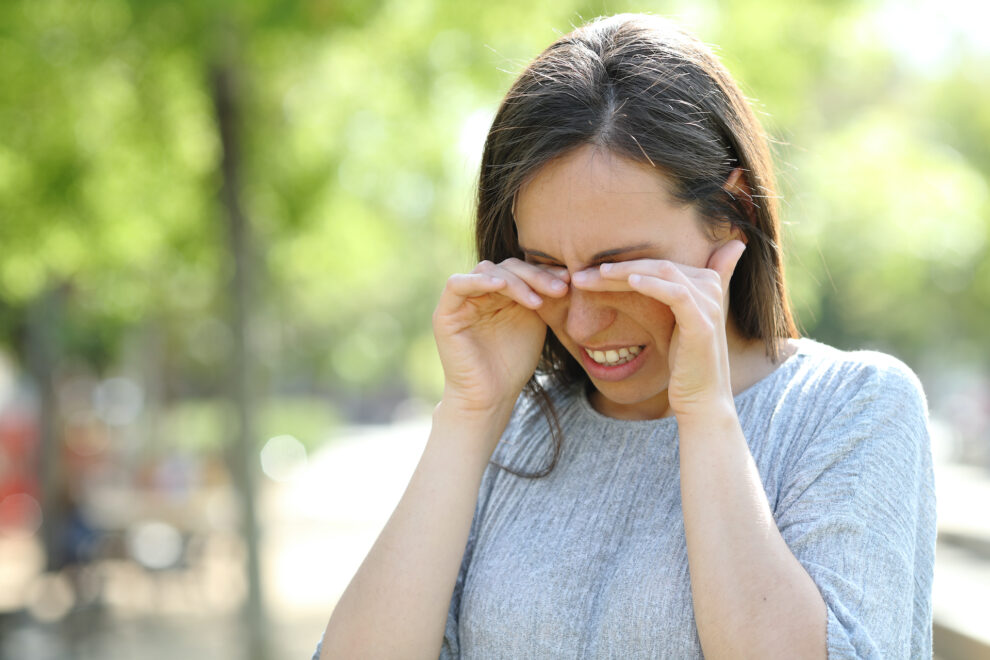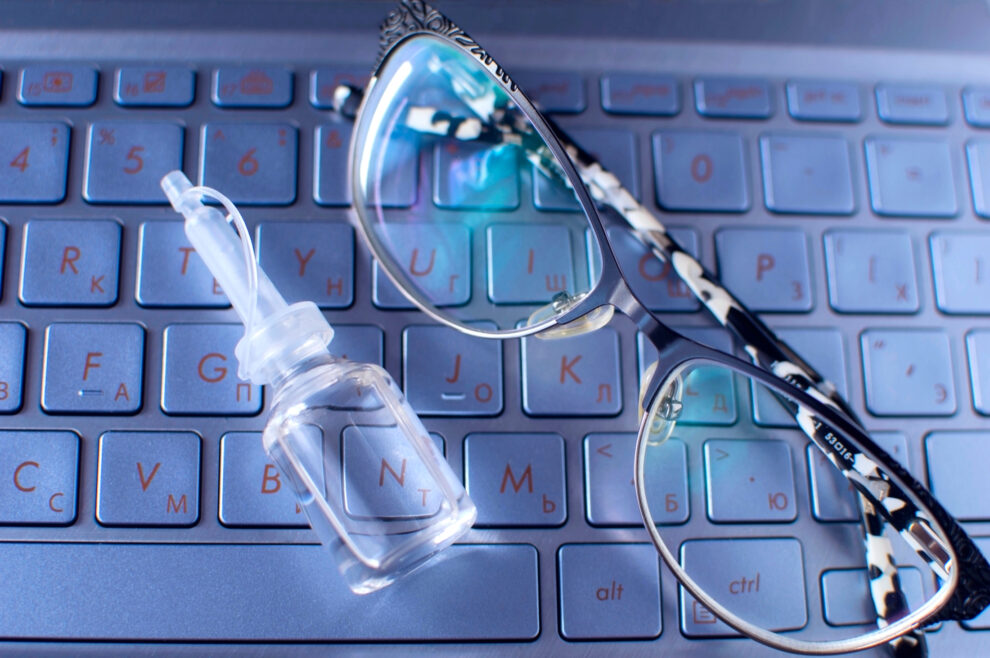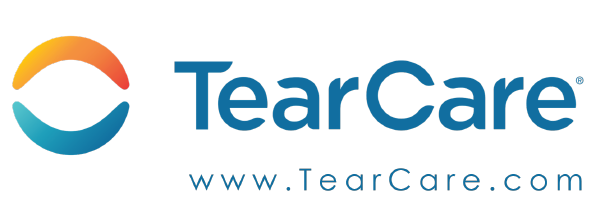Dry Eye

What is Dry Eye?
Are your eyes watery, irritated, or dry? These are common signs of a chronic eye condition called dry eye syndrome. The ophthalmologists at Central Florida Eye Specialists are here to help treat dry eye syndrome, ensuring you can see clearly and improving your symptoms.
Dry eye syndrome occurs when your eyes are unable to create enough tears or when your tears evaporate too quickly from the surface of your eye. Because of this, you may experience frustrating symptoms like dryness, grittiness, or feeling like there’s something in your eye when nothing is there. Having sufficient tears in your eyes is crucial to ensuring your eyes stay healthy. Tears also protect your eyes from irritants, keep them lubricated and moisturized, and help you maintain clear vision.
What is Dry Eye Syndrome?
Dry eye syndrome is a chronic eye condition that affects millions worldwide. If you have dry eye syndrome, the dry eye specialists at Central Florida Eye Specialists will help create a one-of-a-kind and custom treatment plan to determine the root cause of your symptoms and bring you the relief you need. Your cornea requires moisture to function, and your tears have three different layers to provide this necessary lubrication.
The Tear Film
The tear film has three layers: the outermost layer, the middle layer, and the innermost layer.
Outermost Layer
The tear film’s outermost layer is a lipid layer made of oil. The oily layer of the tear film helps tears cling to the cornea and ensures they do not evaporate from its surface too quickly.
Middle Layer
The middle layer of the tear film is made of water. It’s also the largest of the three layers of the tear film. The watery layer gives needed nutrients to the cornea and keeps it healthy and functional.
Innermost Layer
The innermost layer of the cornea is the mucin layer. It’s made of mucus and helps the eye stay moisturized and well-lubricated.
Symptoms of Dry Eyes
If you have dry eyes, you may experience uncomfortable symptoms like:
What Causes Dry Eyes?
Many things can cause dry eyes. However, common causes include:
Treatment from a Dry Eye Specialist
Once one of our ophthalmologists at Central Florida Eye Specialists diagnoses dry eyes, the next step is to determine a custom treatment plan. We offer various treatment options, which will be recommended depending on the severity of your symptoms and what’s causing them. If your eye doctor recommends an at-home regimen and you don’t see improvement, in-office procedures and treatments may be recommended.

Artificial Tears
Artificial tears can be purchased over the counter and can help provide much-needed lubrication and temporary relief from dryness. Your eye doctor may recommend brands like Refresh, Systane, Blink, TheraTears, Retaine, and Soothe. These often contain ingredients that help your eyes retain moisture for longer.
Ointments
If you have a more severe case of dry eye, your Central Florida Eye Specialists ophthalmologist may recommend a lubricating ointment. These are often most helpful when used at night. Ointments are thicker than artificial tears and keep your eyes lubricated and moist while sleeping. Lubricating ointments can be especially useful if you experience a great deal of dryness when you wake up.
Warm Compresses
In addition to feeling good on your eyes, using warm compresses can help improve tear quality by unblocking tear glands in your eyelids. Unblocking these glands allows the oil layer of the tear film to function appropriately and ensures tears will not evaporate too quickly from the surface of your eyes. If you have questions, your eye doctor can show you how to properly apply warm compresses to see the best results.
Punctal Plugs
If your dry eyes are caused by not producing enough tears, your ophthalmologist may recommend punctal plugs. Punctal plugs are small plugs inserted into the puncta, which are the drainage holes in your eyelids. The puncta keep your tears on the surface of your eyes. Using punctal plugs helps keep tears on the surface of your eyes for longer and won’t let them evaporate, taking valuable resources and nutrients. Having punctal plugs inserted in your eyes is not painful and only takes a few minutes to complete. However, they can give you much-needed lasting relief from dry eye symptoms.
Taking Nutritional Supplements
Another way that you can improve the quality of your tears and reduce inflammation due to dry eyes is with nutritional supplements. Certain supplements like omega-3 fatty acids can help, especially if they’re taken while you’re following other steps of a dry eye regimen.
Prescription Medications
Your ophthalmologist may prescribe antibiotics like Doxycycline and Azithromycin to help with dry eye symptoms. These antibiotics help decrease inflammation and other symptoms associated with the eye condition. They must be taken daily for several months to see potential results.
Prescription Eye Drops
You may need prescription eye drops like Restasis or Xiidra, which can help increase your eyes’ ability to produce tears and reduce inflammation. They target the root cause of your eyes’ dryness and can provide you with much-needed relief.
Serum Tears
If you don’t respond well to other treatments, serum tears may be recommended. Serum tears are eye drops made from a sample of your blood. They contain growth factors and nutrients to help heal the surface of your eyes due to dry eye symptoms.
Eye Allergy Medication
Many times, you may have allergies in addition to dry eyes. If allergies are making your dry eye symptoms worse and contributing to them, your ophthalmologist may prescribe eye allergy medication. This medication can help with frustrating symptoms like itching, redness, and other symptoms due to your allergies that having dry eyes worsen.

TearCare

TearCare is an innovative, in-office treatment performed at Central Florida Eye Specialists. It uses targeted heat to unblock oil glands in the eyelids. Doing this helps improve the quality of the tear film and reduces dry eye symptoms and discomfort associated with the eye condition.
TearCare is a comfortable and gentle procedure that only takes a few minutes to complete. It uses wearable eyelid technology that leverages the functionality of your blinking eye and proprietary SmartLid technology. This facilitates natural meibum expression from the eyelids. TearCare is best for patients with Meibomian Gland Dysfunction (MGD), dry eye syndrome, and blepharitis.



